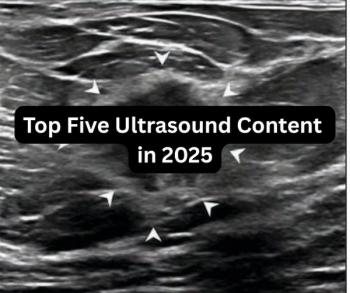Reducing doses in 18F-FDG-PET/MRI of the abdomen may affect image quality, according to a study published in the Journal of Nuclear Medicine. Researchers from Germany evaluated the effect of stepwise reduced doses on objective and subjective image parameters and on oncologic readings in whole-body 18F-FDG-PET/MRI. The researchers retrospectively simulated the stepwise reduction of 18F-FDG doses of 19 patients, mean age of 50.9 years with a body mass index (BMI), who received a whole-body PET/MRI examination, from 3 to 0.5 MBq/kgBW in intervals of 0.25. Objective imaging parameters were assessed by measuring the standardized uptake value (SUV) and coefficient of variation (CV) in different regions: • Aorta • Liver• Spleen• Kidney• Small bowel• Lumbar vertebra• Psoas muscle• Urinary bladder They also evaluated the noise equivalent count rates (NECR) in each bed position. Subjective image quality was evaluated with a blinded reading of each simulated PET compared to the dose of 2 MBq/kgBW. Oncologic reading was performed first, according to PET response criteria in solid tumors (PERCIST) in each dose, and second by defining malignant lesions in doses of 2 MBq/kgBW and the maximum dose image (gold standard). Ninety lesions were found using the standard maximum dose of 3 MBq/kgBW. Eighty-six lesions (95 percent) of these lesions were correctly identified with the lower FDG dose; there were no false-negative or false-positive results. With decreasing doses, regions in the mid-abdomen showed a stronger decrease of SUVmean and NECR than regions in the upper abdomen. SUVmean was -45 percent on average in the small bowel and -15 percent on average in the liver. CV showed a non-linear increase, pronounced below 1.5 MBq/kgBW. Subjective image quality was stable over a range between 1.25 and 2.75 MBq/kgBW compared to 2 MBq/kgBW. However, large photopenic areas in the mid abdomen were observed in two patients. In the PERCIST reading, target lesions were above the liver threshold with a stable SUVpeak in all cases down to 2 MBq/kgBW. The researchers concluded a reduction of doses in 18F-FDG-PET/MRI might be possible down to 2 MBq/kgBW in oncologic whole-body examinations, but the image quality in the mid-abdomen may be more affected by lower doses than in the upper abdomen and in single cases, large photopenic areas can occur. “Therefore, we do not recommend reducing doses below 3 MBq/kgBW in adults at this time,” they wrote.





























